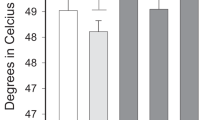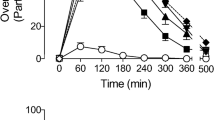Abstract
Rationale. The subjective, psychomotor, and physiological effects of prescription compounds containing the opioid hydrocodone have not been studied in a population of non-drug-abusing people who might be prescribed these compounds for cough or pain relief.
Objectives. To characterize the effects of a hydrocodone combination product, Hycodan, which contains hydrocodone and a peripherally-acting anticholinergic, homatropine, in non-drug-abusing volunteers.
Methods. Eighteen volunteers participated in a crossover, double-blind study in which they received placebo; 5 mg hydrocodone/1.5 mg homatropine, 10 mg hydrocodone/3 mg homatropine, 20 mg hydrocodone/6 mg homatropine (all PO); 40 mg morphine (PO); and 2 mg lorazepam (PO). Measures were assessed before and for 300 min after drug administration. End-of-session and 24-h measures were taken to assess residual drug effects and overall subjects' assessment of the drug effects.
Results. Subjective effects of the hydrocodone/homatropine combination were dose-related, although the majority of statistically significant effects were limited to the highest dose combination tested. A combination of 20 mg hydrocodone/6 mg homatropine and morphine had a similar profile of subjective effects, which included both pleasant and unpleasant effects. Peak liking ratings were increased by 20 mg hydrocodone/6 mg homatropine and morphine, and trough ratings of liking (dislike) were lower in the 20 mg hydrocodone/6 mg homatropine condition, relative to the placebo condition. Post-session ratings of overall liking were not significant, either at the end of the session or 24 h later. Cognitive and psychomotor impairment were more marked with lorazepam than with hydrocodone/homatropine and morphine. Miosis and exophoria were increased in a dose-related manner by hydrocodone/homatropine.
Conclusions. Hycodan at the highest dose tested had effects similar to that of a prototypic mu agonist, morphine. Both drugs produced pleasant (including drug liking) as well as unpleasant subjective effects. Post-session ratings of overall liking and "want to take drug again" were not significant.
Similar content being viewed by others
Author information
Authors and Affiliations
Additional information
Electronic Publication
Rights and permissions
About this article
Cite this article
Zacny, J.P. Characterizing the subjective, psychomotor, and physiological effects of a hydrocodone combination product (Hycodan) in non-drug-abusing volunteers. Psychopharmacology 165, 146–156 (2003). https://doi.org/10.1007/s00213-002-1245-5
Received:
Accepted:
Issue Date:
DOI: https://doi.org/10.1007/s00213-002-1245-5




